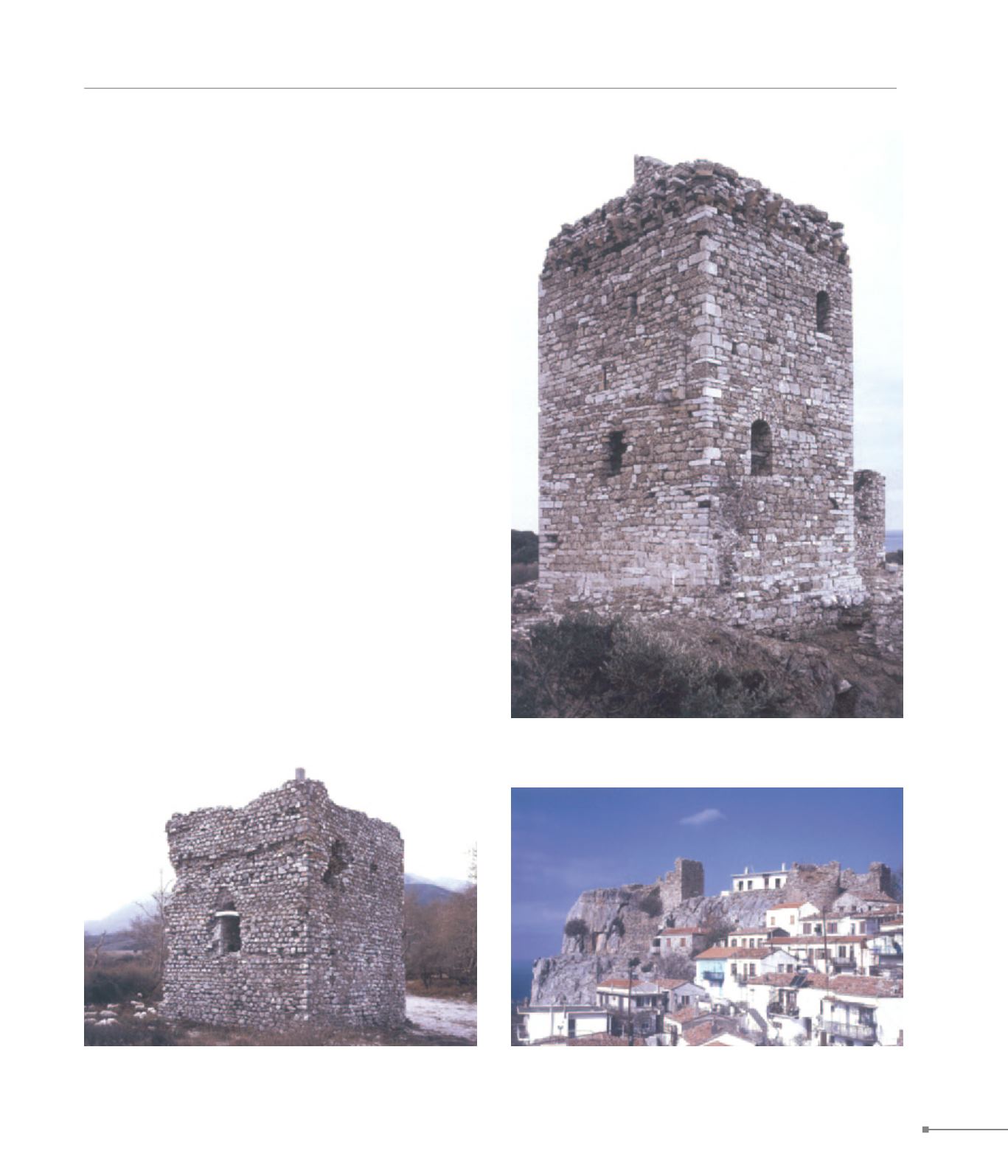
Samothrace.
Samothrace.
THE ISLANDS
313
563. Samothrace, Phonias tower (Σαμοθράκη, πύργος του Φονιά)
563. Samothrace.
The island of Samothrace was significant for the operations
of the Byzantine fleet in the Mid-Byzantine period. It was also
a place of exile for emperors’ eminent rivals. Inland there is
a plethora of small naiskoi, mostly Mid-Byzantine, some with
stone architectural decoration. On the ruins of the sanctuary of
the Great Gods in Palaeopoli (3), a small, almost quadrilateral
fortress, probably with towers on the four corners, was built,
possibly in the 10th c., with material from ancient structures.
Four inscriptions mention building works that had been real-
ised at the fortresses in Chora and Palaeopoli by the ruling
Gattilusi family, or by their officials, in the years 1431, 1431-3,
1433, 1454-5. Chora, inland (1), was a village / administra-
tive centre and provided shelter for the population. From its
fortifications parts of the walls, a gate and towers survive. One
of the towers was built in the Mid-Byzantine period, while the
fortress acquired its present form during Genoese rule. The
name of the head worker survives on a marble inscription:
Κωνσταντίνος μαΐστωρ
(Constantinos master builder). In Pal-
aeopolis, a small fortress (3) is on a steep elevation above the
ancient sanctuary. It has circuit walls, towers and a moat on
the S side of the walls, from where there was access. There is
a four-sided, four-storey donjon with a cistern on the blind first
storey. The upper section of the donjon featured stone-built
corbels that supported a protruding structure – some kind of
oriel – with machicolations on the floor. Below the fortress,
next to the coast, survive the ruins of an Early Christian basili-
ca. On the N beach of the island stands the solitary, four-sided
tower of Fonias (2), also built by the Gattilusi in the 15th c.
Islands in the Northern
and Eastern Aegean
563. Samothrace, Chora (Σαμοθράκη, Χώρα)
563. Samothrace, Palaeopoli (Σαμοθράκη, Παλαιόπολη)


